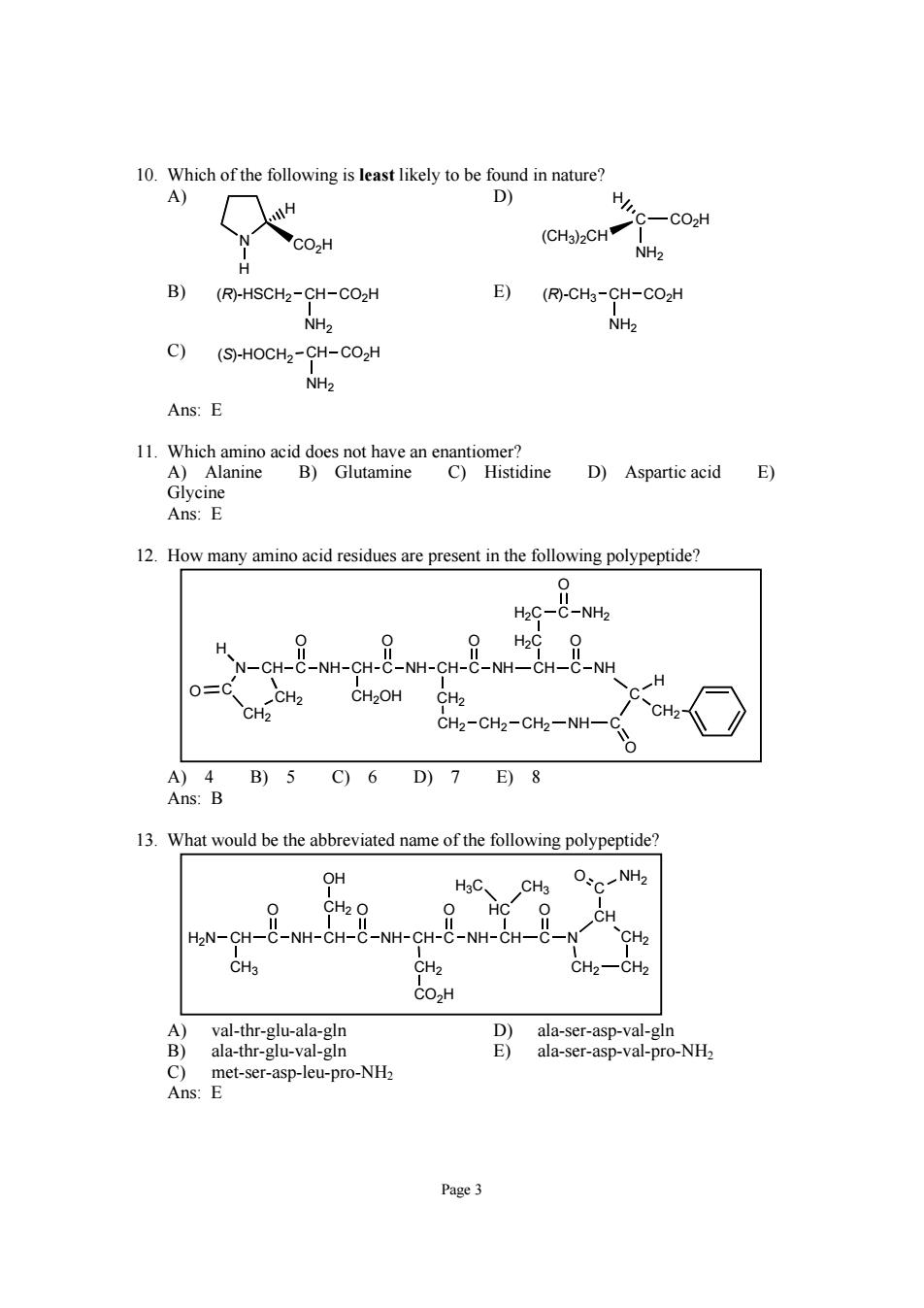正在加载图片...

10.Which of the following is least likely to be found in nature? A) D) H H C-CO2H CO2H (CHa)2CH NH> B) (R)-HSCH2-CH-CO2H E)(风-CH-CH-C02H NH2 NH2 C)(S)-HOCH2-CH-CO2H NH2 Ans:E 1. D)Aspartic acid E) Ans:E 12.How many amino acid residues are present in the following polypeptide? H2C-C-NH2 H O=C H CH-CH CH2OH CH2 CH2-CH2-CH2-NH- c、 A)4 B)5C)6D)7E)8 Ans:B 13.What would be the abbreviated name of the following polypeptide? OH CHs 0 HC 0、 H2N-CH-C NH. NH. CH-C-NH-CH-C CH2 CH2一CH2 CO2H A)val-thr-glu-ala-gln ala-ser-asp-val-gln ap-leu-pro-NH. ala-thr-glu-val-gln 91 ala-ser-asp-val-pro-NHz Page3Page 3 10. Which of the following is least likely to be found in nature? A) N CO2H H H D) (CH3)2CH C H CO2H NH2 B) (R)-HSCH2 CH CO2H NH2 E) (R)-CH3 CH CO2H NH2 C) (S)-HOCH2 CH CO2H NH2 Ans: E 11. Which amino acid does not have an enantiomer? A) Alanine B) Glutamine C) Histidine D) Aspartic acid E) Glycine Ans: E 12. How many amino acid residues are present in the following polypeptide? N CH C NH CH C NH CH C NH CH OOO O C NH C CH2OH CH2 CH2 CH2 CH2 NH C O C H CH2 H2C H2C C O NH2 CH2 CH2 H O A) 4 B) 5 C) 6 D) 7 E) 8 Ans: B 13. What would be the abbreviated name of the following polypeptide? H2N CH C NH CH C NH CH C NH CH O OO O C N CH2 CO2H CH2 OH CH CH2 CH3 CH2 CH2 C O NH2 HC H3C CH3 A) val-thr-glu-ala-gln D) ala-ser-asp-val-gln B) ala-thr-glu-val-gln E) ala-ser-asp-val-pro-NH2 C) met-ser-asp-leu-pro-NH2 Ans: E